If you're in the B2B space, you've probably heard the term marketing automation ROI thrown around like confetti at a victory party.
But what does it really mean, and why should you care?
Spoiler alert: it's not just another buzzword. It's the key to unlocking smarter marketing strategies, happier sales teams, and a fatter bottom line.
In this guide, we'll break down everything you need to know about marketing automation ROI, from what it is (and why it matters) to how you can measure and improve it.
What Is Marketing Automation ROI and Why It Matters for B2B Companies

Let's start with the basics.
Marketing automation ROI is the return on investment you get from using marketing automation tools. In simpler terms, it's the money you make (or save) compared to what you spend on automation software and campaigns.
Why does this matter for B2B companies?
Well, for starters, B2B sales cycles are:
- Longer
- More complex
- Often involve multiple decision-makers
Marketing automation helps you nurture leads, streamline workflows, and close deals faster. But if you're not tracking your ROI of marketing automation, you're essentially flying blind.
Think of it this way: would you pour money into a black hole without checking if it's giving you anything in return?
Probably not. The same logic applies to your marketing automation efforts.
Marketing Automation ROI Statistics
Before we dive into the "how," let's look at some eye-opening marketing automation ROI statistics to set the stage:
|
Statistic |
Insight |
|
80% of marketers say marketing automation increases leads |
More leads = more opportunities to convert. |
|
77% of companies see higher conversion rates with automation |
Automation helps you close deals faster. |
|
Businesses that use automation see a 14.5% increase in sales productivity |
Your sales team will thank you. |
|
63% of companies plan to increase their marketing automation budgets |
It's not just a trend—it's a necessity. |
These numbers make one thing clear: marketing automation ROI isn't just a nice-to-have—it's a must-have for B2B success.
How to Measure Marketing Automation ROI

Now that you're convinced of its importance, let's talk about how to measure marketing automation ROI.
Here's a step-by-step guide to help you get started:
Set Clear Goals and KPIs
Before you can measure ROI, you need to know what success looks like. Are you aiming for more leads, higher conversion rates, or faster sales cycles? Define your goals and align them with specific KPIs.
Track Lead Generation Metrics
How many leads is your automation software generating? Track metrics like cost per lead (CPL) and lead-to-customer conversion rates to see if your campaigns are paying off.
Monitor Conversion Rates
Are your automated emails and workflows actually converting? Keep an eye on metrics like click-through rates (CTR) and conversion rates to gauge effectiveness.
Calculate Revenue Impact
This is where the rubber meets the road. Compare the revenue generated from automated campaigns to the cost of running them. Use a marketing automation ROI calculator to make this process easier.
Measure Sales Cycle Efficiency
How long does it take to close a deal? Automation should shorten your sales cycle, so track this metric to see if it's working.
Track Customer Retention and Lifetime Value (CLTV)
Retention is just as important as acquisition. Use automation to nurture existing customers and boost their lifetime value.
Use ROI Calculators
Tools like marketing automation ROI calculators can simplify the math and give you a clear picture of your returns.
Evaluate Campaign Performance
Not all campaigns are created equal. Regularly review performance data to identify what's working and what's not.
Integrate with CRM and Analytics Tools
Your CRM is a goldmine of data. Integrate it with your marketing automation platform to track ROI more accurately.
A/B Test and Optimize Campaigns
Experimentation is key. Use A/B testing to fine-tune your campaigns and maximize ROI.
How to Improve Marketing Automation ROI for B2B Companies

Measuring ROI is only half the battle—you also need a strategy to maximize it. Marketing automation can be a powerful tool, but only when used effectively.
Here are some proven ways to optimize your marketing automation efforts and boost your ROI.
Segment Your Audience Effectively
Not all leads are created equal. One-size-fits-all marketing simply doesn't cut it in B2B. By segmenting your audience based on industry, job title, company size, or engagement level, you can tailor messaging that resonates.
For example:
- Industry Segmentation: A SaaS company selling to healthcare firms should emphasize compliance and data security, while targeting retail businesses might require a focus on customer experience.
- Behavior-Based Segmentation: Leads who have downloaded multiple whitepapers show higher intent than those who just subscribed to your newsletter—treat them differently in your campaigns.
With better segmentation, you ensure the right message reaches the right person at the right time, increasing engagement and conversion rates.
Nurture Leads with Targeted Content
B2B buyers don't make decisions overnight. They research, compare, and deliberate. Nurture them through their journey with valuable, personalized content.
- Top-of-Funnel: Educational blog posts, industry reports, and infographics to attract awareness.
- Middle-of-Funnel: Case studies, webinars, and product comparisons to build trust and engagement.
- Bottom-of-Funnel: Free trials, ROI calculators, and live demos to push conversions.
A well-structured drip campaign—where leads receive timely, relevant content marketing based on their interactions—keeps them engaged and moving toward a purchase.
Align Sales and Marketing Teams
Sales and marketing alignment is crucial for ROI. If marketing brings in leads but sales doesn't follow up effectively, or if sales demands unqualified leads, ROI suffers.
How to improve collaboration:
- Set shared KPIs—Agree on what defines a sales-qualified lead (SQL) to prevent misalignment.
- Use CRM and automation tools—Platforms like HubSpot, Marketo, or Pardot ensure sales gets real-time updates on lead activities.
- Hold regular meetings—A simple 15-minute weekly sync between sales and marketing can resolve issues before they affect revenue.
Optimize Lead Scoring
Every lead isn't worth the same effort.
Prioritize high-value prospects by refining your lead scoring model using:
- Firmographics: Company size, industry, and annual revenue.
- Behavioral Data: Email engagement, website visits, and demo requests.
- Demographics: Job title and decision-making power.
For example, a VP of IT who downloaded a whitepaper and visited your pricing page is more valuable than an intern who just opened one email. By focusing on leads most likely to convert, you improve efficiency and close more deals.
Leverage Analytics and A/B Testing
Marketing without data is just guessing. Analytics and A/B testing help fine-tune your automation strategy.
Here's what to test:
- Email Campaigns: Test subject lines, CTA buttons, and send times.
- Landing Pages: Optimize form length, headlines, and visuals.
- Ad Campaigns: Compare different messaging and targeting methods.
Regular analysis helps identify what's working and what's not, so you can continuously optimize for better performance.
Automate Personalization at Scale

Customers expect a personal touch—even in automated marketing. Dynamic content lets you personalize messages at scale.
Here's how:
- Emails: Use the recipient's name, company, recent interactions, and include a professional email signature to reinforce your brand and contact information
- Website Content: Show personalized recommendations based on visitor behavior.
- Chatbots & AI Assistants: Deliver tailored responses instead of generic scripts.
When personalization is done right, engagement rates skyrocket, and ROI follows suit.
Streamline Campaign Workflows
Marketing automation should simplify—not complicate—your workflows.
Identify bottlenecks and remove inefficiencies:
- Automate repetitive tasks like email follow-ups, lead routing, and data entry.
- Use workflows to nurture leads instead of manually tracking engagement.
- Integrate tools seamlessly so your CRM, email marketing, and sales software work together smoothly.
Less manual effort means more focus on strategy and creative execution.
Monitor and Optimize ROI Regularly
ROI improvement isn't a one-and-done task—it's an ongoing process.
- Set benchmarks and track progress monthly or quarterly.
- Analyze pipeline metrics (e.g., lead conversion rates, cost per acquisition).
- Refine strategies based on data—If a campaign isn't performing, tweak it rather than waiting for it to fail.
By continuously optimizing, you ensure your marketing automation delivers the best possible returns.
FAQ
Marketing automation is a powerful tool, but understanding its return on investment (ROI) can be tricky. Whether you're wondering what a good ROI looks like, how to calculate it, or when to expect results, we've got you covered.
Here are answers to some of the most common questions about marketing automation ROI.
What Is a Good ROI for Marketing Automation?
A good marketing automation ROI varies by industry, but a 5:1 ratio (earning $5 for every $1 spent) is generally considered strong. High-performing companies may achieve even better returns, especially with well-optimized automation strategies.
Can I Use a Marketing Automation ROI Calculator for Free?
Yes! Many tools offer free marketing automation ROI calculators to help you estimate your returns. These calculators typically consider factors like lead volume, conversion rates, and customer lifetime value to give you a clearer picture of your potential ROI.
How Long Does it Take to See ROI from Marketing Automation?
It depends on your goals and strategies, but most companies start seeing results within 6–12 months. The timeline can vary based on factors such as the complexity of your automation setup, the quality of your lead nurturing, and how well your sales and marketing teams align.
Get the Best Marketing Automation ROI Possible
At the end of the day, marketing automation ROI isn't just about numbers—it's about making smarter decisions, building stronger relationships, and driving real business growth. By measuring and optimizing your ROI, you can turn your marketing automation efforts into a well-oiled revenue-generating machine.
So, what are you waiting for? Start tracking your ROI of marketing automation today and watch your B2B success soar.
If you need help, we at Roketto are just a message away.
Contact us today to find out how to boost your marketing automation ROI and get the best results for your business.

Garreth Aspeling
Garreth has 6 years of experience crafting compelling SEO-based blog posts and articles for various audiences. From cryptocurrency to SaaS and everything in between, Garreth always creates high-quality content for his clients. He is also engrossed in books, hiking trails, and spending time with loved ones.











2.png)
2.png)









